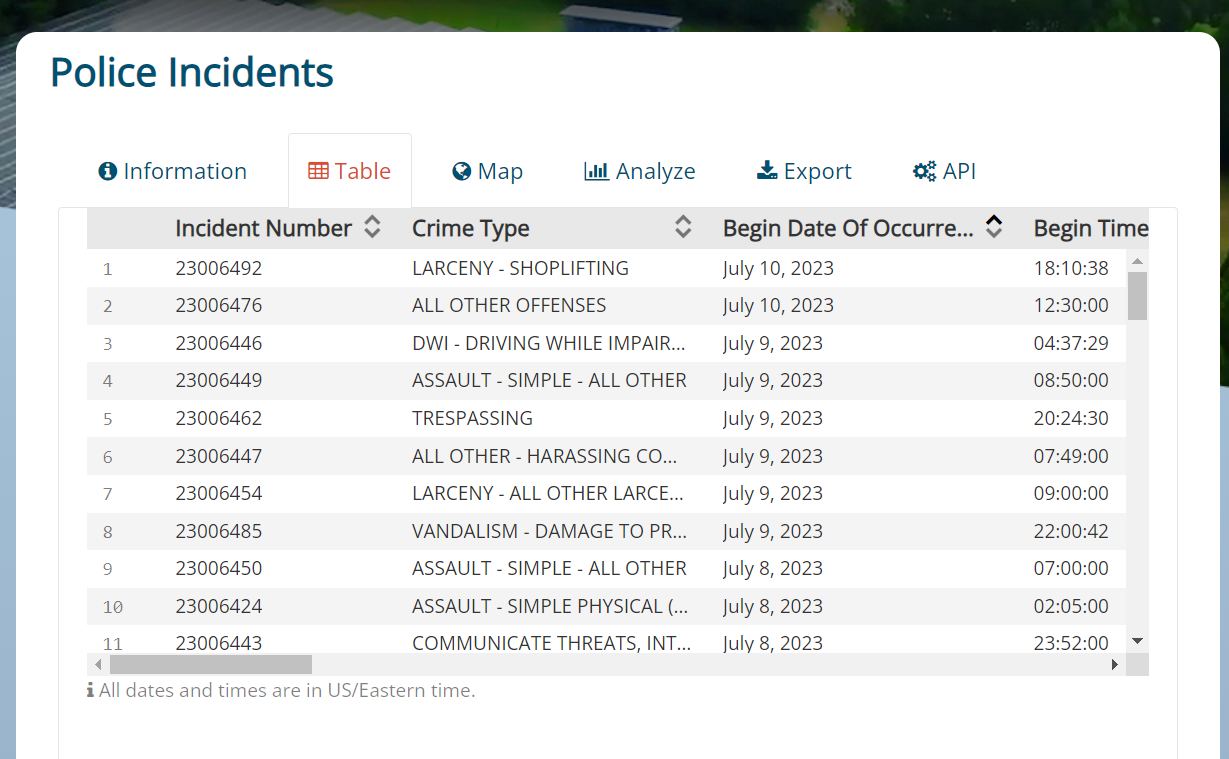Open crime data for police departments
Many cities in the United States have open data websites, and one of the most common datasets on those websites are crime data. For example, here is a screenshot of Cary, North Carolina’s open crime dataset:

Cities should share crime data – I will go over the types of data departments share and the benefits for cities to do so.
What data do departments typically share?
Most departments share crime incident data, the data often contains limited information, such as the major crime category, datetime of the report, and the 100 block address. These datasets are often lagged (by a day or more), so the data can be vetted before being posted. They also often do not upload potentially sensitive events, such as victimization of juveniles or reported rapes.
Other datasets that are sometimes shared, are:
- calls for service (typically including priority and time stamps of called/responded/cleared)
- arrest data (names are almost always redacted)
- use of force data (such as taser use or office involved shootings)
- traffic and pedestrain stops (including race of those stopped, with contraband and citation rates)
The majority of this data is already public information, historically one needed to go to the police department and do a records request (or FOIA). Technology makes it easy to share this standardized data with everyone over the internet for very little cost.
What are the benefits to open data?
The main benefit from a police departments perspective is that being open allows citizens the ability to interact with the data directly. Examples of this are Spot Crime’s web api’s, where individuals can sign up for email alerts if crime happens nearby.
Another is data scientists can take the open data and conduct more detailed data analysis, examples of my work doing this are:
- Million dollar hotspots in Baltimore
- Home Buying and hotspots in Raleigh
- Dallas Crime Trends Dashboard
The old school way was printing out maps and going to community meetings. While I still encourage police to do community meetings, having web based applications makes it much easier to share trends with the entire community.
Sharing data is a force multiplier – instead of just having your own crime analysts, now you have local journalists and citizens examining crime data.
What are the downsides to sharing data?
Having outside individuals look at crime trends can seem scary to police departments. People can misinterpret that data and paint the police department in a bad light.
Having open data does not substantially increase that risk. Sunshine can actually reduce the ability for outside groups to misinterpret data. If the news paper runs a story that there was a spree of robberies and crime is out of control, you can pull up the crime data and show trends over time.
In terms of risk for other outside watchdog groups, pretty much all of the data above is available via freedom of information records requests. To prevent such groups from painting the police in a bad light, your department should be proactive and generate valid analysis of that data. For example instead of waiting for an outside group to look at stop rates per local demographics, you should generate a more valid racial benchmark analysis proactively.
How do I share data?
Good news is that it is quite easy to share data. The simplest approach is to just upload regular data files to the internet. For example Houston PD uploads data in spreadsheets once a month.
There are other web application portals, such as ArcGIS (which most cities already have licenses for).
Both of these types of data sharing can be easily automated, so it is a one time process to set up to be able to share data.
If you are interested in creating open data, feel free to get in touch with Crime De-Coder, I can help automate the process and show different value-added applications of that data to your department.